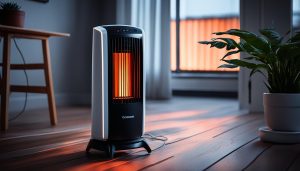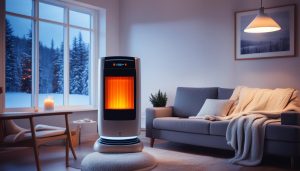Infrared Heaters in the USA – An Electrician’s Perspective
My name is Ted Curley, and I’m a professional electrician with over 15 years of experience. Today I wanted to provide you with a comprehensive overview of infrared heaters, which have become an increasingly popular heating option here in the USA. As an electrician, I’ve installed countless infrared heaters and am very familiar with their benefits, features, top brands and everything in between.
Below I’ve outlined key information on infrared heaters to help you make an informed decision if you’re considering purchasing one for your home or business.
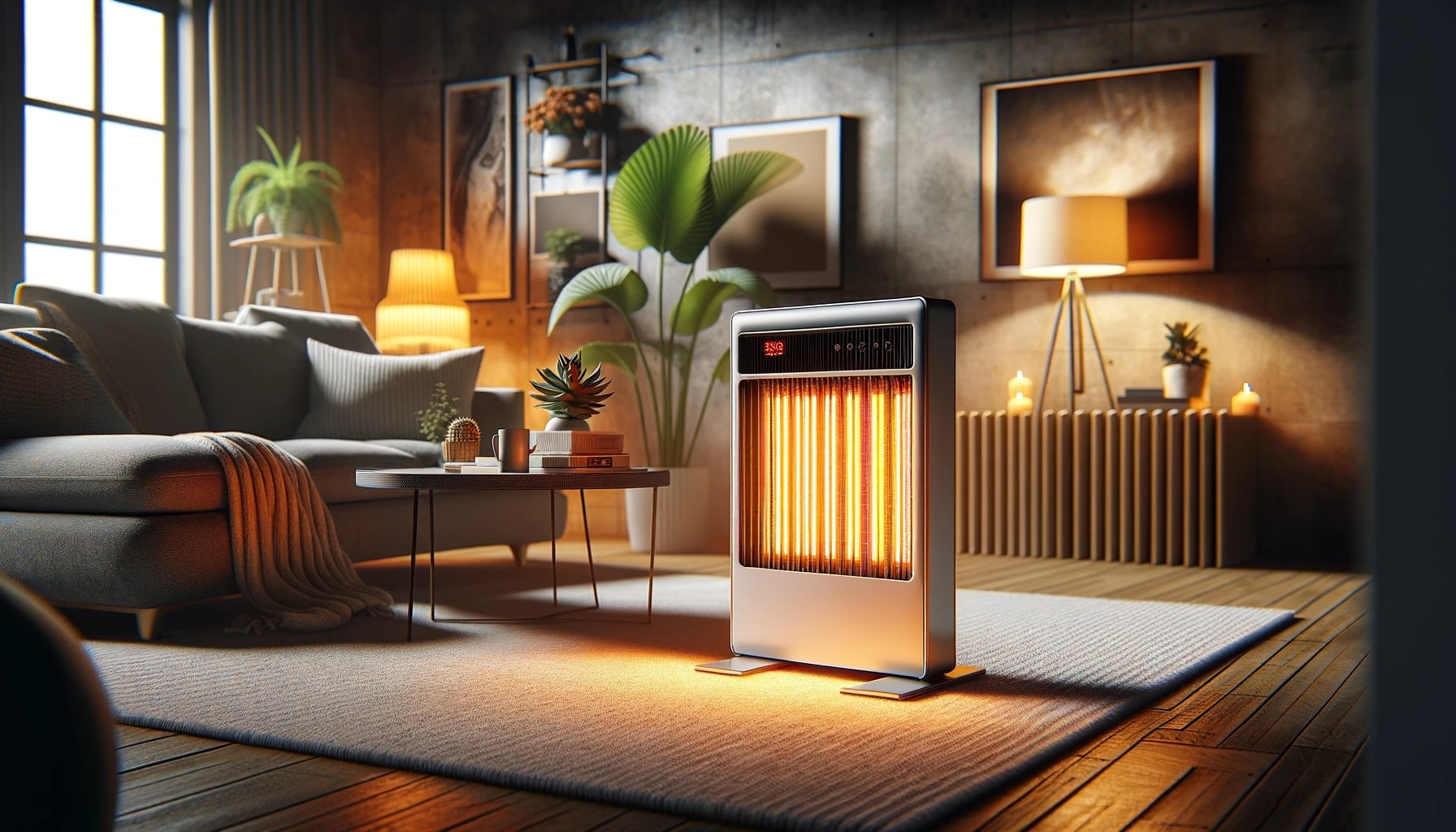
What Are Infrared Heaters?
Infrared heaters are a type of radiant electric heater that works by emitting infrared radiation that directly heats objects rather than just the air. The heat waves warm up nearby people and surfaces, providing targeted heat efficiently.
Unlike convection heaters that blow hot forced air throughout a room, infrared heaters provide a more focused stream of heat. This makes them ideal for heating specific zones rather than an entire area.
Some of the main benefits of infrared heaters include:
Energy efficient
Infrared heaters only heat the objects you direct them at rather than wasting energy warming an entire room. This can lead to lower energy bills.
Focused heating
You can precisely aim the heat in a direction rather than heating empty space.
Instant heat
Infrared heaters provide instant warmth as soon as you turn them on.
Quiet operation
Infrared heaters don’t rely on noisy fans to disperse heat.
Safe operation
Advanced infrared heaters have numerous built-in safety features to prevent overheating and tip-overs.
Affordable pricing
Usually infrared heaters cost in $50-250 range.
Types of Infrared Heaters
There are a few main varieties of infrared heaters, each with their own unique features and heating methods.
Quartz Infrared Heaters
Quartz infrared heaters use a quartz heating element encased in a metal or glass tube. As electricity passes through the element, it heats up and emits infrared heat.
Pros:
- Very energy efficient
- Even heat distribution
- Long element life
Cons:
- Can take a few minutes to heat up
- Quartz elements are prone to breakage
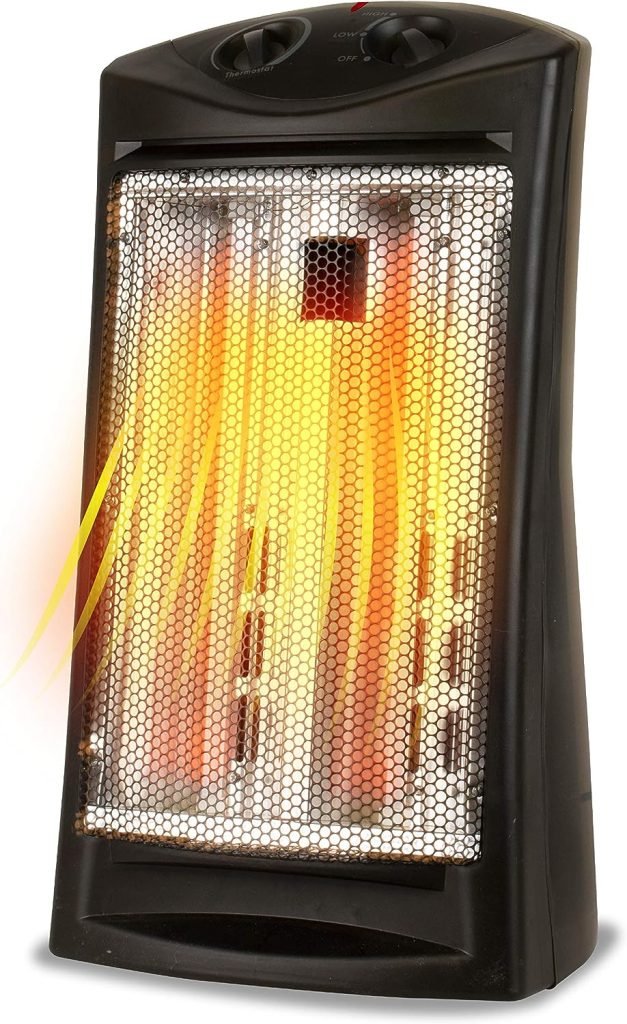
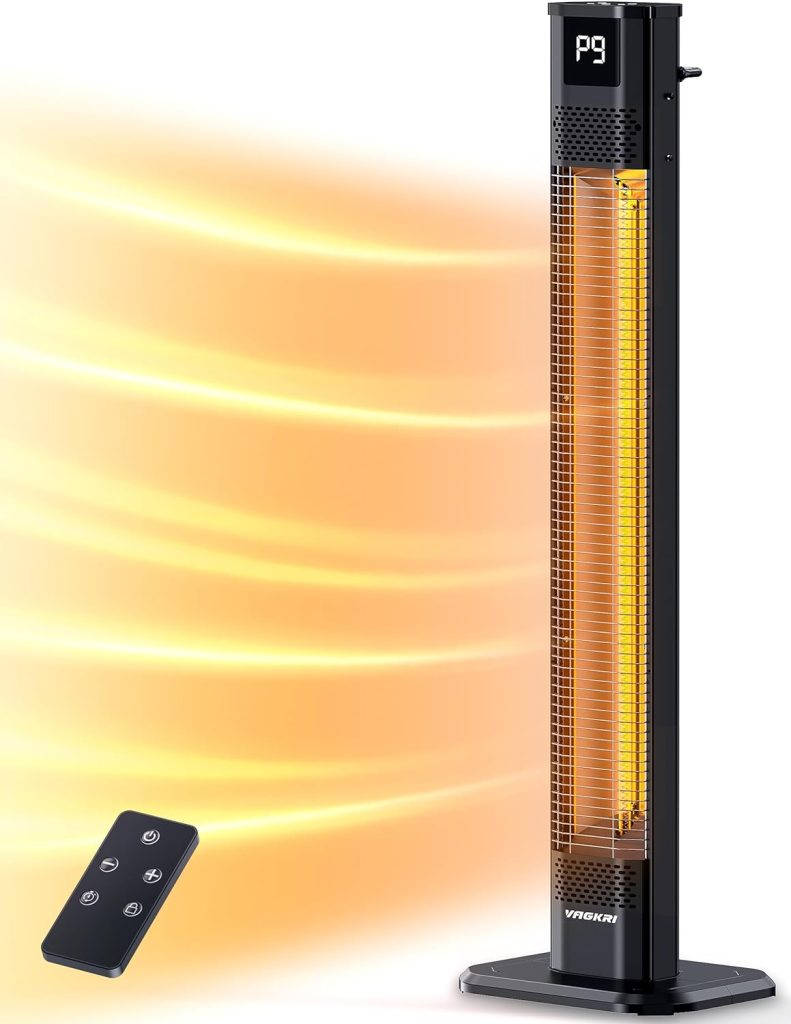
Carbon Infrared Heaters
Carbon infrared heaters utilize a carbon fiber heating element to produce heat. The carbon material allows the element to heat up rapidly.
Pros:
- Heat up instantly
- Energy efficient
- Durable elements
Cons:
- Uneven heat distribution
- Shorter element life than quartz
Ceramic Infrared Heaters
Ceramic infrared heaters use a ceramic plate or coil that emits heat as electricity passes through it. The ceramic holds heat well.
Pros:
- Very fast heating
- Retains heat effectively
- Durable build
Cons:
- High electricity consumption
- Gets extremely hot so risk of burns

Styles of Infrared Heaters
Infrared heaters come in a variety of styles and designs to suit different applications and settings.
Portable Infrared Heaters
As the name suggests, portable infrared heaters are lightweight and easy to move from room to room or spot heat where needed.
Ideal uses:
- Supplemental zone heating
- Temporary heating solution
- Heat for small spaces like offices

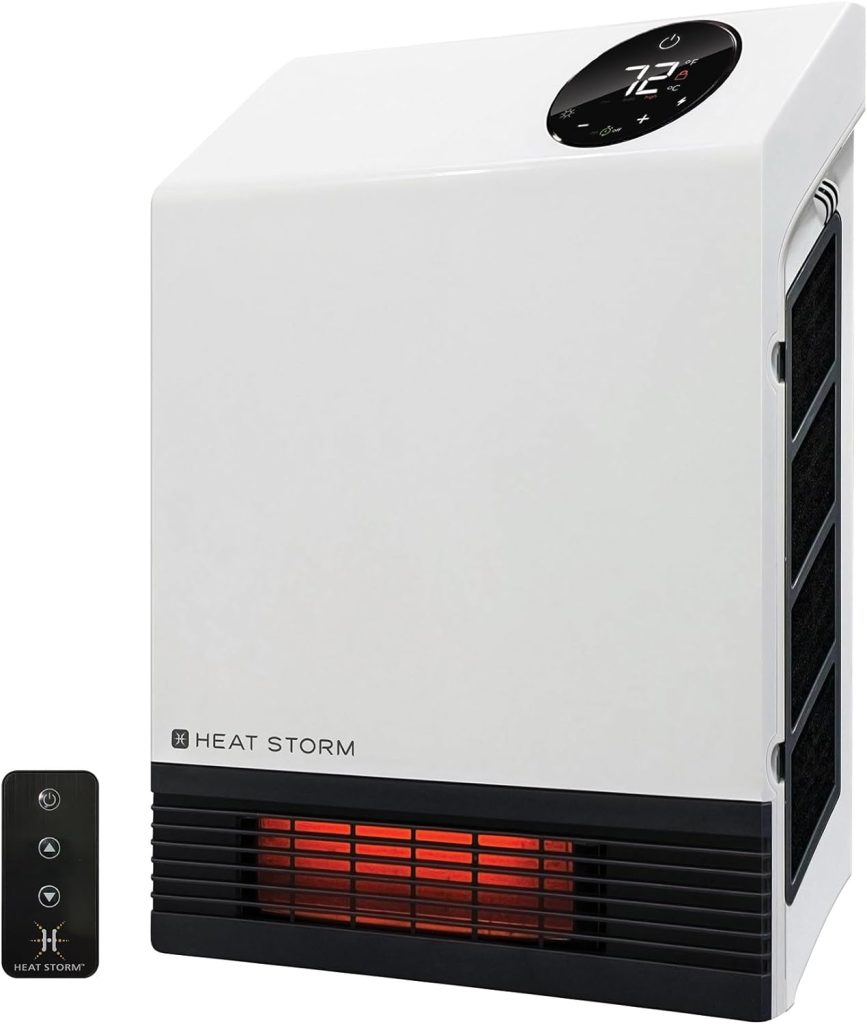
Wall-Mounted Infrared Heaters
Wall-mounted infrared heaters permanently install onto walls for heating specific areas.
Ideal uses:
- Bathrooms
- Garages
- Workshops
Freestanding Infrared Heaters
Freestanding infrared heaters sit on the floor and often have wheel bases for easy repositioning. They work well for heating large open areas.
Ideal uses:
- Living rooms
- Dining rooms
- Basements
- Warehouses
- Workshops
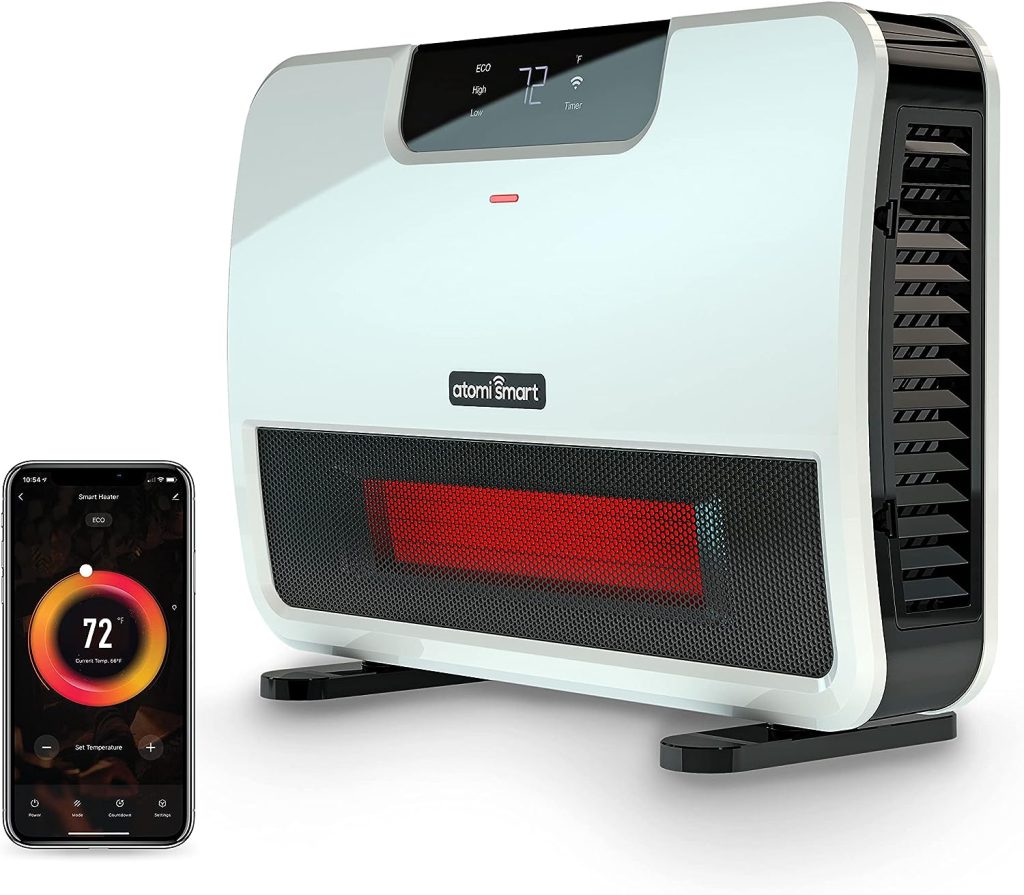
Key Infrared Heater Features
Now that we’ve covered infrared heater types and styles, let’s look at some of the most important features and components to consider when choosing an infrared heater.
Heating Capacity
Consider the heating capacity measured in BTUs/hr that you need to sufficiently heat your intended space. Smaller rooms and offices may only require 5,000 BTUs whereas larger living rooms and warehouses may need 10,000+ BTUs.
Size and Portability
If you need a portable infrared heater, pay attention to the overall size and weight. Compact lightweight heaters are easier to move around.
Heat Settings
Look for infrared heaters with adjustable heat settings and thermostats to customize the temperature.
Noise Level
Infrared heaters are generally very quiet, but some have fans that can generate noise so check decibel ratings if concerned.
Special Features
Some infrared heaters offer eco modes, humidity settings, and more for added functionality.
Air Purification
Some higher-end infrared heaters also filter and purify the air to improve indoor air quality.
Timers
Timers allow you to program the heater to turn on and off at set times, providing convenience and saving energy.
Remote Controls
Handy remote controls allow you to adjust the heater settings from across the room.
Safety Features
Advanced infrared heaters have tip-over switches, overheat protection, and cool-touch exteriors to prevent accidental burns.
“Infrared heaters offer highly effective zone heating solutions with lower energy costs compared to many traditional forced air heating methods. I highly recommend homeowners explore infrared heating for supplemental heating needs.”
Dr. Lon McEachern
owner of Zone Heat Products
Top Infrared Heater Brands
There are numerous brands manufacturing infrared heaters, but these are some of the top names to look for:
- EdenPURE – Very affordable and energy efficient models. Known for their portable heaters.
- Dr. Infrared Heater – Feature-packed heaters with high BTU outputs. Good for large rooms.
- Honeywell – Reliable brand with a range of heaters at different price points.
- Lasko – Budget-friendly brand offering basic portable heaters under $100.
- LifeSmart – Great mid-range brand with many customized comfort settings.
- Dyson – Premium brand with bladeless heaters and advanced air purification.
Using Infrared Heaters Safely
While infrared heaters provide safe, focused heating, there are some precautions to take for optimal safety:
- Place on flat, stable surfaces away from high traffic areas
- Avoid using near flammable materials
- Check for tip-over switches and overheat sensors
- Buy only ETL/UL certified heaters
- Check the wattage rating for your electrical circuit
- Provide ample clearance around the heater
- Clean and maintain according to manufacturer instructions
- Unplug when not in use for extended periods
- Keep supervised around children and pets
Infrared Heater Purchasing Considerations
Here are some final tips when shopping for an infrared heater:
- Calculate the room size and required BTUs
- Consider a wall-mounted, portable or freestanding heater
- Check for adequate safety certifications and features
- Look for adjustable heat settings and timers
- Compare noise ratings if concerned about fan noise
- Consider bonus features like remote controls or air purifying filters
- Choose a reputable brand offering decent warranties
- Compare prices between different retailers and models
Join 900+ subscribers
Stay in the loop with everything you need to know.
